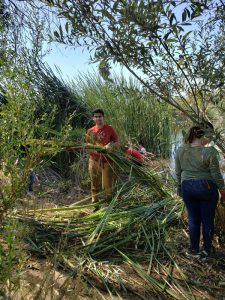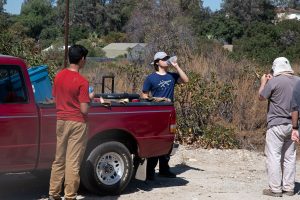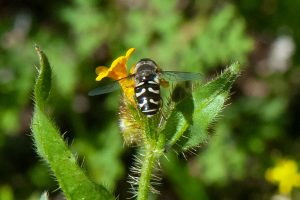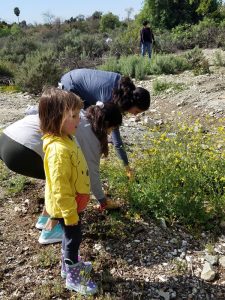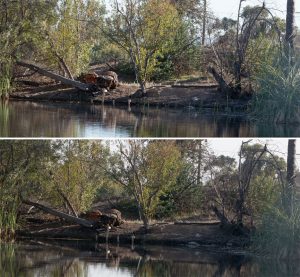As we move into a new academic year – and a new season of volunteer workdays – it’s fun and satisfying to look back on what we accomplished last year and to look at some photos not previously posted.
As usual, we started off with cattail removal, which you can see here, here, here, and here. Once that was done, we cleared the lake trail and planted a bunch of plants before winter break.
The spring semester was almost all about mustard and other invasive annuals.
We started each workday with instruction on how to recognize and remove the target plant:

Volunteers get instruction of recognizing mustard.
We pulled a whole lot of mustard – Sahara Mustard, Mediterranean Cabbage, Short-pod Mustard, Field Mustard – you name it!

Gio, Sean, and Maclellan go after Sahara Mustard by the Foothill Blvd fence.

Jesse pulls some Mediterranean Cabbage.

Henry with his mustard plant.

BFS Director Marty Meyer checks on the progress of the work.

Volunteers pull mustard by the fence.

Volunteers with some giant mustard.

Christine hauling out a big load of mustard.
And at the end of the spring we were pulling tocalote (aka Maltese Star Thistle) as well as mustard.

Volunteers attack mustard and tocalote.
And, of course, in June we had our special workday with the Sustainable Claremont Green Crew for Invasive Species Action Week.
All those pulled weeds got stuffed into cans or loaded into the truck to be taken to the collection point, where they are taken away for a landfill or composting.
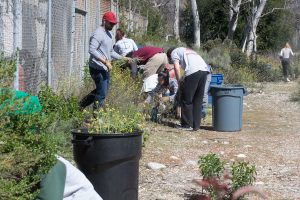
Volunteers pull mustard, filling up the cans.
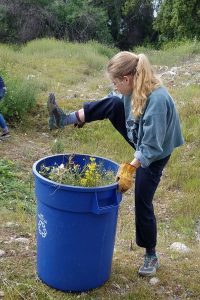
Get in there! Jesse stomps the mustard into the can.

Wow! Look at all that pulled mustard!

A truckful of mustard.

Volunteers with the HUGE pile of mustard they pulled.
We also pulled some other invasives – notably Horehound and a Peruvian Pepper Tree at the top to the ‘Neck’.
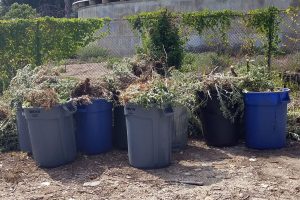
Cans full of horehound!

The truck full of cans of horehound and a pepper tree!
After all that pulling, volunteers headed back to the outdoor classroom for a well-deserved pizza lunch.

Volunteers head off for lunch.
Although, sometimes the pizza took a while to get there …

Madison and Sarah eagerly awaiting arrival of the pizza.

MacClellan, Gio, and Sean also waiting for pizza.

Joshua, Daisy, Nyx, and John hoping the pizza will get here soon.
And we volunteers happy for a job well done and a tummy full of tasty pizza.

Ted, Frank, and Erick.

Dick and Dean.
And a happy field station, where the native plants can thrive.

Top of the Neck with Horehound and a Peruvian Pepper Tree.

Top of the Neck with the Horehound and Pepper Tree gone.
Thank you, than you, volunteers!!!
And now we start another cycle! This year’s workdays have just begun. The next one (cattails, of course) will be Saturday, September 21, if you’d care to join us. You can see the whole schedule for the year here.
Tags: Brassica tournefortii, mustard, Sahara Mustard, volunteers











